The Cracked Pot
By John Greco
Originally published on June 4, 2012
Re-posted with permission from johnponders blog
 A Chinese woman had two large pots, each hung on the ends of a pole which she carried across her neck.. One of the pots had a crack in it while the other pot was perfect and always delivered a full portion of water.
A Chinese woman had two large pots, each hung on the ends of a pole which she carried across her neck.. One of the pots had a crack in it while the other pot was perfect and always delivered a full portion of water.
At the end of the long walks from the stream to the house, the cracked pot arrived only half full..
For a full two years this went on daily, with the woman bringing home only one and a half pots of water..
Of course, the perfect pot was proud of its accomplishments. But the poor cracked pot was ashamed of its own imperfection, and miserable that it could only do half of what it had been made to do.
After two years of what it perceived to be bitter failure, it spoke to the woman one day by the stream.
‘I am ashamed of myself, because this crack in my side causes water to leak out all the way back to your house.’
The old woman smiled, ‘Did you notice that there are flowers on your side of the path, but not on the other pot’s side?’ ‘That’s because I have always known about your flaw, so I planted flower seeds on your side of the path, and every day while we walk back, you water them.’
For two years I have been able to pick these beautiful flowers to decorate the table. Without you being just the way you are, there would not be this beauty to grace the house.”
[Author unknown, but greatly appreciated! If you or anyone you know has a proprietary interest in this story please authenticate and I will be happy to credit, or remove, as appropriate.]
I used to have an old, decrepit picket fence along the property line behind my garage. It was in disrepair. As I went about working to remove it, I couldn’t bring myself to just throw all the pickets in the trash.
I used some of the pickets to hide my garbage can and recycling container staged on the side of the house.
 Last year, I used most of the rest of the pickets to create an old, arbor-like, shabby-chic backdrop for my pond (see picture, right). Looks like its been there a hundred years, but it’s perfect, for now, to support the cardinal vine that will hug it, twist and turn through it; and when in bloom, beckon the hummingbirds…
Last year, I used most of the rest of the pickets to create an old, arbor-like, shabby-chic backdrop for my pond (see picture, right). Looks like its been there a hundred years, but it’s perfect, for now, to support the cardinal vine that will hug it, twist and turn through it; and when in bloom, beckon the hummingbirds…
My wife and I have had a wicker table almost since we’ve been married (our 34 year anniversary was yesterday) and it also has deteriorated (the wicker table; not the marriage!) to the point that it no longer can be depended on to safely serve as a table. Last weekend, I cut the legs off, and placed the wicker top in a spot in the garden, with pea gravel under and around (see picture below). I’ve still work to do to secure it, but it already has piqued some visual interest to the previously nondescript corner…

And now I’m pondering using the wicker table legs to intersperse among the pond edge bamboo stakes!
I have, as you might have surmised, a bit of a compulsion to reuse things. To repurpose. To extend the utility of the unique character of things that long have seen a better day.
The Chinese woman took a pot that didn’t quite work well for it’s intended purpose, and she made it work well for another — shall we say higher? — purpose. It could not quench her thirst as much as it had before, but perhaps we can say that it is satisfying her thirst for something different.
But there is a cost. Her labor is returning 25% less water for her and her family using that cracked pot.
And soon I will need to redo the picket screening around my garbage cans.
And the shabby chic picket back drop surely won’t last as long as a structure made from new wood would…
Utility, and return on investment — as beauty — is in the eye of the beholder.
The author of the story above gave the cracked pot the ability to voice its discouragement and shame over its lost capability. I am realizing now that that storytelling technique gave the author the opportunity to have the Chinese woman talk to the cracked pot, pointing out the critical contribution the pot was playing in beautifying her path, and her home.
I imagine that cracked pot felt pretty good after hearing that…
I will be listening to my pickets; and I will be listening to my wicker table pieces-parts; and I will tell them how much I appreciate their new contribution; I will tell them how they are satisfying my thirst for something, well, different.
And I will leave it to you (at least for now) to make the more explicit connections of this story, and my story, to our real worlds — for they are many, and varied, and meaningful.
For we will all be — if we’re not already — cracked pots.


 My community had a paltry 10% of eligible voters turn out to vote on Election Day. My neighbor said that any vote that didn’t have at least 40% of the eligible voters voting should be thrown out. But, of course and for good reason, it doesn’t work like that. Elections – and most other things – are decided by those who show up.
My community had a paltry 10% of eligible voters turn out to vote on Election Day. My neighbor said that any vote that didn’t have at least 40% of the eligible voters voting should be thrown out. But, of course and for good reason, it doesn’t work like that. Elections – and most other things – are decided by those who show up.


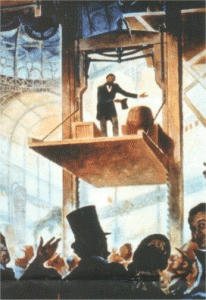 Thousands of spectators flooded into the Crystal Palace Exposition in New York City.
Thousands of spectators flooded into the Crystal Palace Exposition in New York City. But I under appreciate the downside risks. I, consequently, short change the risk mitigation section of the proposal. In fact, sometimes I omit it entirely.
But I under appreciate the downside risks. I, consequently, short change the risk mitigation section of the proposal. In fact, sometimes I omit it entirely.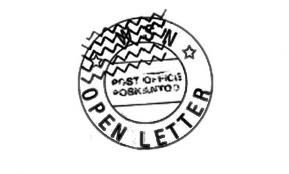 My online friend, Marc Pitman is hosting this month’s Nonprofit Blog Carnival and asks his fellow non-profit bloggers to write an open letter to executive directors in honor of President’s Day. For those of you who don’t know of Marc, he is well-known to friends and business associates as “The Fundraising Coach“. As the coach describes in his
My online friend, Marc Pitman is hosting this month’s Nonprofit Blog Carnival and asks his fellow non-profit bloggers to write an open letter to executive directors in honor of President’s Day. For those of you who don’t know of Marc, he is well-known to friends and business associates as “The Fundraising Coach“. As the coach describes in his  If you cry “Forward!” you must make clear the direction in which to go. Don’t you see that if you fail to do that and simply call out the word to a monk and a revolutionary, they will go in precisely the opposite directions.
If you cry “Forward!” you must make clear the direction in which to go. Don’t you see that if you fail to do that and simply call out the word to a monk and a revolutionary, they will go in precisely the opposite directions.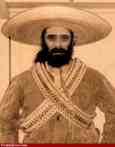

 At my previous agency, their national office made tremendous investments in webinars (aka distance learning). The following are just a few of the training titles I saw them offering:
At my previous agency, their national office made tremendous investments in webinars (aka distance learning). The following are just a few of the training titles I saw them offering: Many people have discovered Slacker radio, but online radio isn’t just about streaming music while you workout.
Many people have discovered Slacker radio, but online radio isn’t just about streaming music while you workout. In this post I will be sharing one of the most profound and impactful lessons of my life.
In this post I will be sharing one of the most profound and impactful lessons of my life. That’s quite a stretch you say? Okay, another possibility: because you are not so much concerned about the project now, you can devote some time and energy to researching twice a week home nursing visits for your mom. That concern just slid into your circle of influence…
That’s quite a stretch you say? Okay, another possibility: because you are not so much concerned about the project now, you can devote some time and energy to researching twice a week home nursing visits for your mom. That concern just slid into your circle of influence…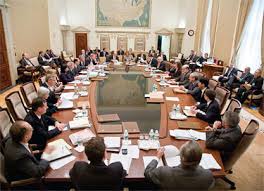 Appointed or elected community leaders govern an organization. As outlined in my favorite Board book
Appointed or elected community leaders govern an organization. As outlined in my favorite Board book 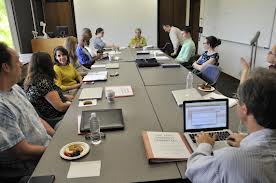 The Finance Committee, chaired by Treasurer, works with the appropriate staff in examining the financial reports, understanding and monitoring the financial condition of the organization and preparing the annual budget. The Treasurer presents the monthly financial statements to the Board at each board meeting. This committee also selects an audit firm each year and reviews the audit plan, audit and 990, which should be signed by the Treasurer prior to submission.
The Finance Committee, chaired by Treasurer, works with the appropriate staff in examining the financial reports, understanding and monitoring the financial condition of the organization and preparing the annual budget. The Treasurer presents the monthly financial statements to the Board at each board meeting. This committee also selects an audit firm each year and reviews the audit plan, audit and 990, which should be signed by the Treasurer prior to submission.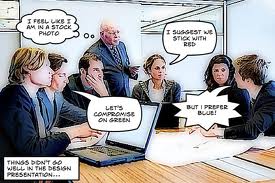 I recommend caution when creating committees to do the work of staff. It gets very confusing as to who is responsible for what and responsible to whom. If Board members are acting in staff roles, the Executive Director retains the authority for decision-making. If the Board members are operating within the scope of their roles, the Board has the authority for decision-making. Conversations had in advance can help you avoid role confusion and the overstepping of boundaries.
I recommend caution when creating committees to do the work of staff. It gets very confusing as to who is responsible for what and responsible to whom. If Board members are acting in staff roles, the Executive Director retains the authority for decision-making. If the Board members are operating within the scope of their roles, the Board has the authority for decision-making. Conversations had in advance can help you avoid role confusion and the overstepping of boundaries. As someone with two degrees in planning, I catch myself all the time with my non-profit clients explaining that the solution to their problems is that they need a plan. It might be a strategic plan, resource development plan, or board development plan . . . but oftentimes I am amazed at how many times failing non-profit agencies just haven’t invested in creating plans. I mean, come on folks! Who hasn’t heard the old expression, “If you fail to plan, then you plan to fail“?
As someone with two degrees in planning, I catch myself all the time with my non-profit clients explaining that the solution to their problems is that they need a plan. It might be a strategic plan, resource development plan, or board development plan . . . but oftentimes I am amazed at how many times failing non-profit agencies just haven’t invested in creating plans. I mean, come on folks! Who hasn’t heard the old expression, “If you fail to plan, then you plan to fail“?